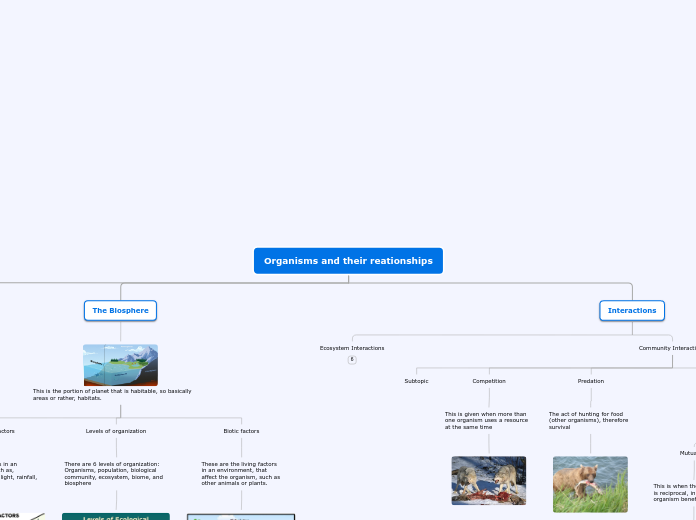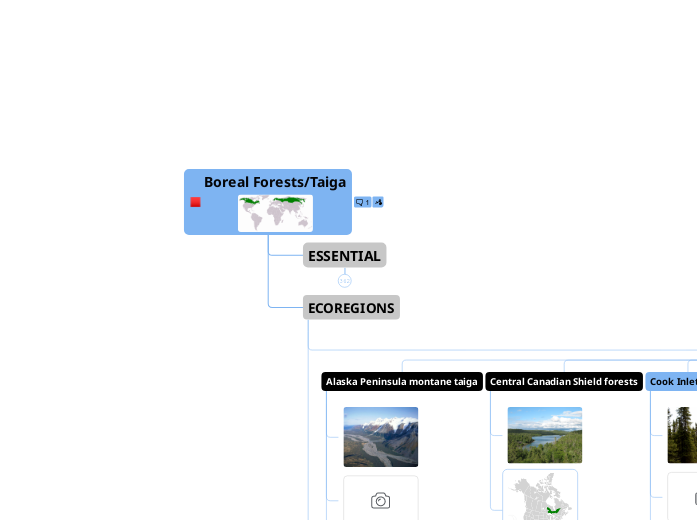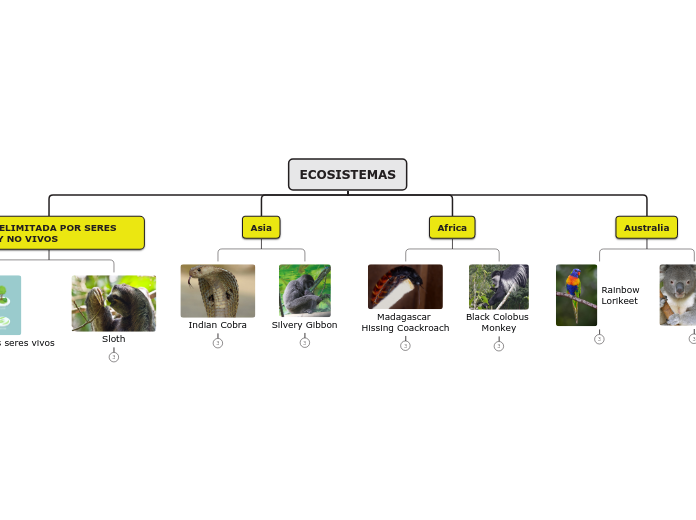Organisms and their reationships
Interactions
Community Interactions
Symbiotic relationships
The close relationship of two or more species that live together
Parasitism
When on only one organism benefit with the cost of the other
Commensalism
This occurs when one organism is benefited, but the other one is neither harmed or helped.
Mutualism
This is when the reationship is reciprocal, in which each organism benefits
Predation
The act of hunting for food (other organisms), therefore survival
Competition
This is given when more than one organism uses a resource at the same time
Ecosystem Interactions
Niche
Is a role or position that organisms have in their environemnt
Habitat
This is a specific area where organisms live
Subtopic
The Biosphere
This is the portion of planet that is habitable, so basically areas or rather, habitats.
Biotic factors
These are the living factors in an environment, that affect the organism, such as other animals or plants.
Levels of organization
There are 6 levels of organization: Organisms, population, biological community, ecosystem, biome, and biosphere
Abiotic factors
Non-living factors in an environment, such as, temperature, sunlight, rainfall, etc.
Ecology
Ecology is a science that studies organisms and their interactions with the environment
ORGANISMS ARE INTEREDEPENDT, food chains are an example of this, on how organisms depend on others.









